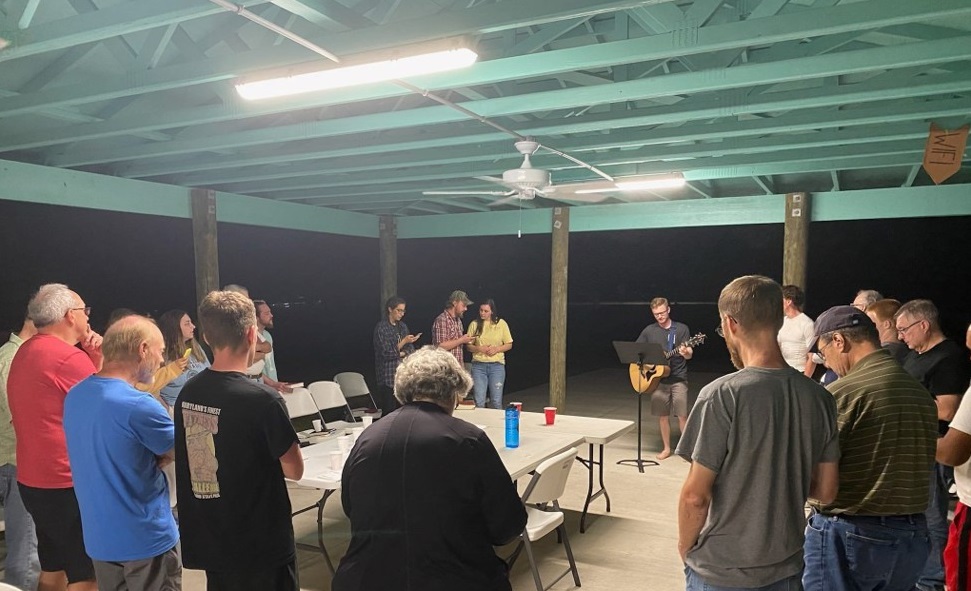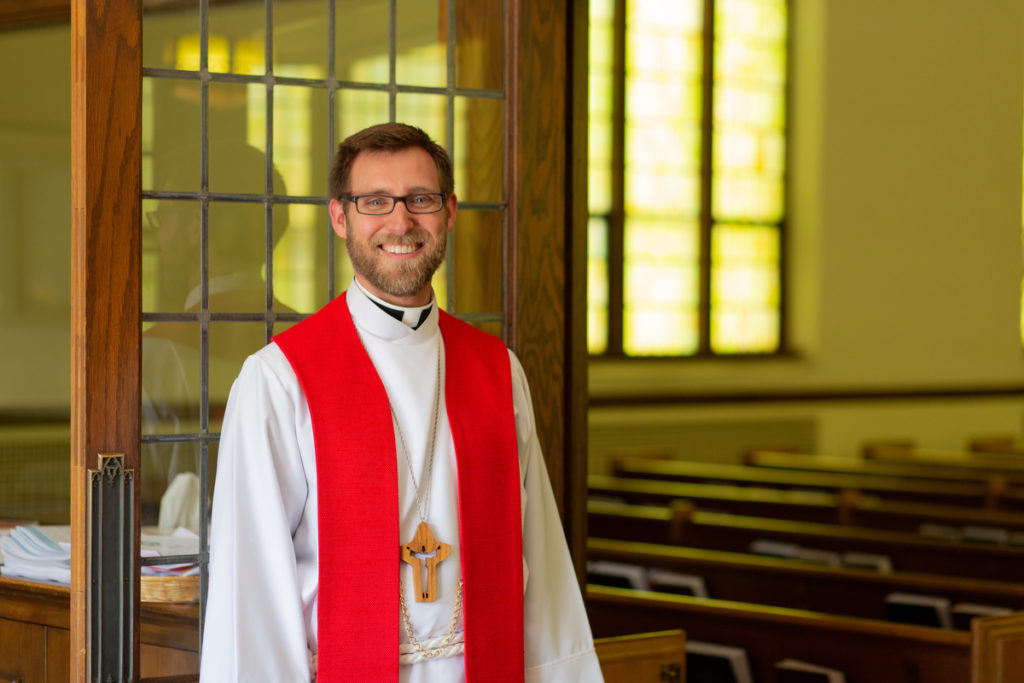Editor’s note: River’s Edge Ministry (REM), located in Mt. Airy, MD, traveled to Pine Island, FL in January as part of Cross Country Mission (CCM) 2023. Pine Island was devastated by Hurricane Ian in late September 2022. Mary Bates, NALC Disaster Response Coordinator, did the necessary groundwork to find the work sites that matched our team’s skillsets. Lutheran CORE’s board provided funding that enabled REM to reduce the cost of the trip for the crew. Previous articles about Cross Country Mission and City Mission include The Potency of Missional Engagement, Igniting Renewal Through Mission and How City Mission Was Born, Part 1: Katrina, the Unwelcomed Reformer.
As a pastor-mission developer who has served for many decades, I believe we—those who are part of a so-called ‘mainline’ denominational church body—are facing a hard (and potentially devastating) reality: Who will be leading our churches, especially as a significantly large percentage of clergy retire and many others ‘step down’ because of discouragement and sheer exhaustion? AND, where is the ‘next generation’ of pastors and leaders? The intent of this article is not to answer these questions but to simply acknowledge and remember that we, as pastors and leaders of Christ’s Church, are called to grapple with such realities and then present hope in the midst of it all. These times press us to consider other, more general questions: “Lord, what are You saying to us?” and “Lord, how should we respond?” I desire to offer at least a glimmer of hope by sharing a hard lesson in fully ‘releasing’ the next generation into leadership.
This ‘hard lesson’ involved laying aside my leadership, unconditionally, and literally watching from afar as the next generation took the reins and completely oversaw a very challenging disaster relief mission which we had been planning for months through Mary Bates, Coordinator of NALC Disaster Response. Though they did all of the work and I watched from 1100 miles away, it was an unexpected blessing to behold and one from which we, I, learned a great deal. In a nutshell, I was sidelined and could not lead this effort called Cross Country Mission: Pine Island, FL because I developed shingles in my right eye. Just days before the scheduled departure from MD on January 29th, I was still resolved to be part of this effort. But then my ophthalmologist informed me that if I didn’t stay home and rest, I might lose my eyesight. I listened. I suppose we could’ve cancelled but, instead, we recalibrated our strategy and the next generation stepped fully and willingly into the task before them. Not only did I keep my eyesight but I gained a greater vision of how important it is to equip and mobilize the next generation by fully releasing them into leadership roles.
In this article, I’d like to share a bit, as both father and pastor-mission developer, of how the Lord made a way and used a difficult circumstance for the greater good (cf. Romans 8:28). It’s encouraging to know that there’s well-grounded precedence for such a happening: “Behold, I am doing a new thing; now it springs forth, do you not perceive it? I will make a way in the wilderness and rivers in the desert.” (Isaiah 43:19)
One of the greatest joys in my life has been parenting. As a father for nearly 34 years, it seems that I am still learning the fundamentals of child-rearing. One of them is transitioning from the demanding commitment of rearing and raising little ones to, perhaps, the greater challenge of releasing them into a world beyond the familiarity and comfort of home. It seems that there’s not much difference between our pastoral/shepherding role in ministry and our parenting role. As parents, we are called to eventually release our children into their full potential, giftedness, calling/vocation, and God-ordained destiny, etc. Is ministry any different? As a priest, pastor, shepherd, father/mother of the faith, are we not to release and mobilize our congregants, disciples, etc. into the work of the ministry for the sake of the Kingdom? As I shared in the opening paragraphs of this article, I just experienced this reality, face-to-face, in a very real and practical way, both as a parent and as a pastor; especially in terms of more effectively moving a child (or disciple) from a preparatory season of rearing-raising (or equipping) into a fruitful season of releasing (or mobilizing).
A while back, I attended a conference regarding what it means to build a discipling culture—an environment to communicate and pass on the faith—within the local church setting. During that time, a clear and concise model was presented on how to create such a culture. It is one that you may be familiar with and is especially apropos to our present conversation. I believe it’s especially helpful and a simple but highly-effective pedagogical tool in raising up the next generation of leaders. For the sake of clarity, we’ll simply refer to this model as a teaching square.

The “P” in our teaching square represents parenting. Our “progression” in teaching our children is essential as we move from P1 to P4, especially knowing that they are—whether we’re aware of it or not—watching and learning from our words and actions. Again, we can bring out the very best in our kids and release them with a self-assured independence, or we can choose not to take the time to parent our children thoughtfully and wait for a different outcome. We could just as easily replace the ‘P’ with a ‘D’ with the emphasis being discipling not parenting. But the teaching square is easier said than done. As pastors and leaders within the Church, one of our great privileges is leading our parishioners into a deeper relationship with Jesus Christ while simultaneously equipping and mobilizing them for the work of the ministry … and the Church’s mission. My great confession in this article is that it’s been difficult for me—both as a parent and a pastor—to move around the square fluidly. I find myself stumbling around P4 (or D4), YOU DO—I WATCH! But I know it’s absolutely essential, especially in raising up and fully releasing the next generation.
I believe you could share a similar story and make a similar confession, but for me it took ‘shingles in the eye’ for my soul to awaken to the gravity of what’s at stake—If our children, the next generation AND/OR our parishioners-disciples are not fully and unconditionally released as missional disciples, then the future of the Church is greatly at risk. Fully releasing means trusting, accepting and expecting that the Lord’s already gone before us, making our paths straight and the rough roads smooth (Psalm 5:8), and causing the necessary infrastructure to be built with new (and different) resources, ideas and relationships, etc. It means that we faithfully lead around the teaching square, but then pause (before we stumble) at P4-D4, take a deep breath … and then completely and unconditionally relinquish our own need to lead and pass the baton into the more-than-competent hands of those we’ve been faithfully shepherding and discipling, especially the next generation! We should then be able to take a seat, rest, rejoice, and then cheer them on with a loud cry, YOU DO-I WATCH! Indeed, it was a joy to watch two of my sons, Jacob and Caleb, and two other young adults enthusiastically take the reins of leadership for Cross Country Mission: Pine Island, FL.
Paralleling many of my own thoughts about leadership in his provocative article, How Your Congregation Can Identify, Enlist and Train Part-time Ministers, Pastor Don Brandt writes, “The current shortage of available pastors in the LCMC and NALC presents a difficult challenge for a great many call committees … In fact, such a scenario can result in nothing less than an existential crisis for their congregations.” This article is very helpful in at least stimulating a much-needed conversation in which all leaders and pastors of every congregation should engage. Though well-intended, addressing such important concerns should not be reserved for just another hierarchically-appointed task force or national staff person. Again, ALL of us should be intensely involved in the discourse because, after all, what happens if we’re not able (or are unwilling) to enlist others to lead when finding or calling an ordained pastor becomes nigh impossible? This question ties in with my opening questions: Who will be leading our churches, especially as a significantly large percentage of clergy retire and many others ‘step down’ because of discouragement and sheer exhaustion? AND, where is the ‘next generation’ of pastors and leaders?
Thank you for taking the time to at least consider how we might more effectively release our parishioners, especially the next generation, into the mission field. Because I wasn’t able to be part of Cross Country Mission: Pine Island, FL, Kim Smith, a missional partner with River’s Edge Ministries and one who did participate, will tell at least part of the rest of the story of how the work of ministry unfolded. Enjoy her article, (Per)Mission to Lead, also published in Lutheran CORE’s March newsletter. You’ll read about how the team stepped up as she and the other 24 co-laborers from many different churches did the work of the ministry. I stood back and watched … And it was way more than good!






All photographs used in this article were provided by various crew members.



















